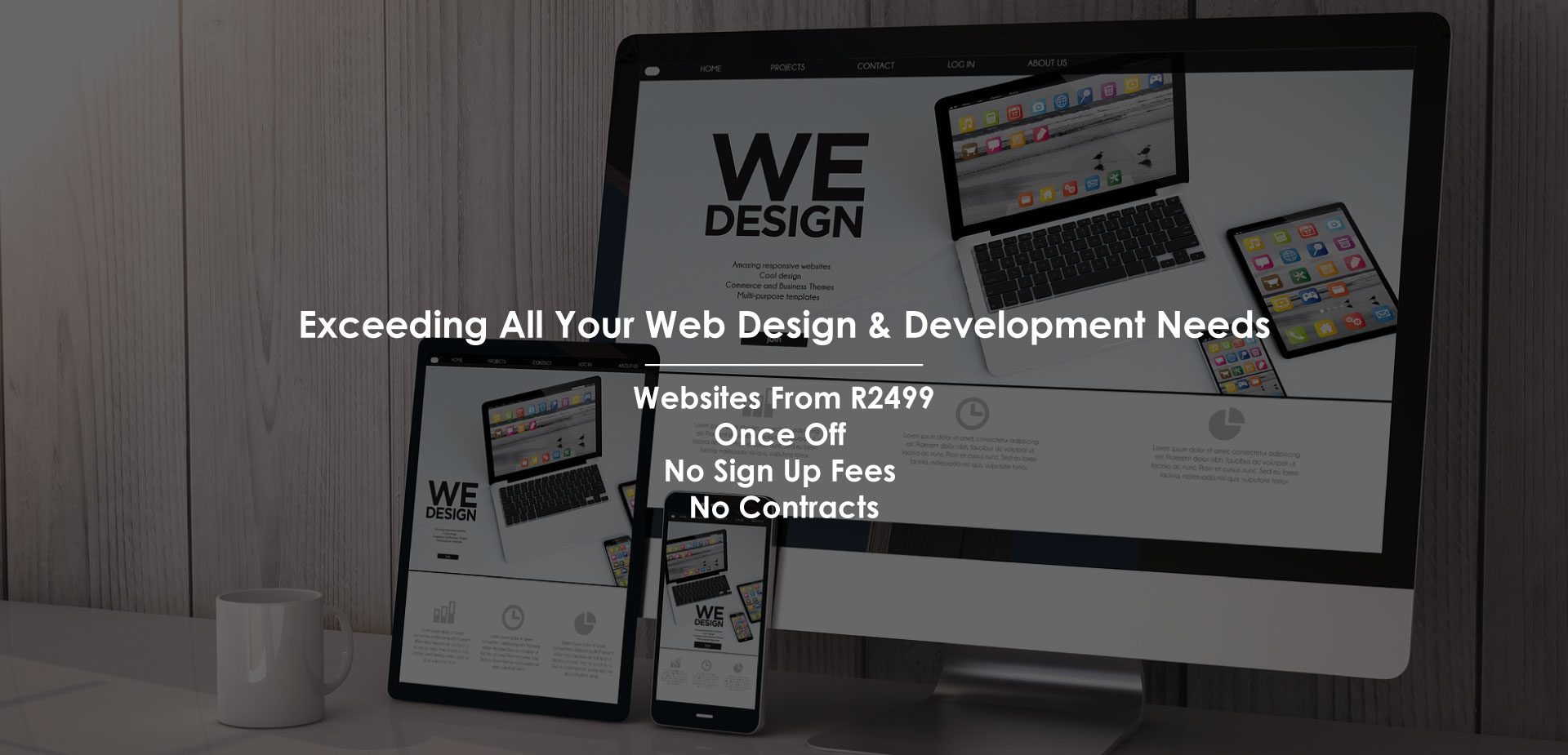A Comprehensive Guide to Responsive Internet Style Methods
Receptive website design has come to be an important part in the advancement of digital systems, permitting for a seamless customer experience across a wide range of devices. This overview will certainly explore critical methods such as liquid layouts, media questions, and image optimization that add to effective responsive design. By recognizing these principles, designers can develop sites that not just adjust visually but also enhance individual engagement. The landscape of internet layout is regularly evolving, increasing questions about the future of responsiveness and the strategies that will certainly specify it.
Recognizing Receptive Website Design
Receptive website design (RWD) is an approach that guarantees a website's layout and content adapt seamlessly throughout a variety of tools and screen dimensions (Web Design Pretoria). This design approach is necessary in today's digital landscape, where individuals accessibility web sites from smartphones, tablets, laptop computers, and desktop computers. RWD enhances customer experience by permitting a site to keep functionality and aesthetics, despite the gadget being made use of
A key element of RWD includes liquid grids that utilize relative devices, such as percentages, as opposed to fixed units, to define format elements. This versatility makes it possible for images, text, and other elements to resize proportionally, supplying an optimal viewing experience. Additionally, media inquiries are employed to use different designs based upon tool attributes like display size and positioning. This method makes sure that the internet site's style is customized to the particular requirements of individuals, enhancing use.
Additionally, RWD adds favorably to look engine optimization (SEO) by advertising a single, consistent URL for a web site, which simplifies link sharing and indexing. As mobile phone use proceeds to climb, recognizing and implementing receptive web style is crucial for companies aiming to get to a wider target market and enhance total web performance.
Key Principles of Responsive Style
To create a reliable receptive layout, several vital concepts have to be taken into consideration. This means designing for the tiniest displays initially and considerably enhancing the format for larger gadgets.
2nd, versatile grids and formats are important. Utilizing a grid system that adjusts to different screen dimensions allows for a harmonious circulation of material, ensuring readability and usability throughout gadgets. This versatility is enhanced by the use of loved one devices, such as percentages or ems, as opposed to repaired pixels.

Finally, focusing on content hierarchy is necessary. Clear and logical organization of material boosts individual experience, guiding site visitors through the site effortlessly, no matter of the gadget used. Web Design Pretoria. By adhering to these principles, designers can produce websites that are not only aesthetically attractive however user-centered and also useful throughout all tools
Strategies for Liquid Layouts
Liquid formats are necessary for creating flexible web experiences browse around here that flawlessly get used to different display dimensions. By using percentage-based widths as opposed to repaired pixel values, developers can ensure that elements on a webpage resize proportionally, preserving visual harmony across gadgets. This technique promotes versatility, enabling content to flow and adjust as the viewport adjustments.
One effective approach for achieving liquid designs is to use CSS Flexbox or Grid systems. These CSS components make it possible for developers to develop responsive frameworks that can quickly resize and rearrange based on the readily available room. Flexbox succeeds in one-dimensional designs, while Grid is suitable for two-dimensional plans, giving better control over positioning and positioning.
An additional technique includes using media questions to specify breakpoints where modifications are required - Web Design Pretoria. By defining various designs for different display sizes, developers can modify design buildings dynamically, guaranteeing optimum usability and visual appeal
In addition, integrating relative units like ems or rapid eye movements for font sizes and spacing can further boost fluidness, as these devices range based upon individual setups or moms and dad components. With each other, these strategies help with the growth of fluid designs that advertise an interesting customer experience across varied devices.
Enhancing Images for All Gadgets
Photos play an essential duty in web style, and enhancing them for numerous devices is vital for boosting efficiency and user experience. To attain this, designers ought to utilize receptive photo techniques that make sure photos present correctly across different display dimensions and resolutions.
One efficient method is using hop over to these guys the HTML" element, which enables defining multiple photo sources based upon the display conditions. By employing 'srcset' characteristics, programmers can provide different photo resolutions, making it possible for the browser to choose the most appropriate one for the individual's tool.
Furthermore, carrying out correct file styles is vital. Styles such as JPEG, PNG, and WebP each serve distinctive functions and can considerably impact filling times. WebP, for circumstances, uses remarkable compression, resulting in smaller data dimensions without giving up high quality.
Another essential element is picture compression. Tools like TinyPNG or ImageOptim can reduce file sizes, boosting filling speed while maintaining aesthetic honesty. Making use of CSS for background pictures can streamline filling as they can be controlled extra fluidly throughout tools.
Ultimately, optimizing photos not just improves website efficiency yet likewise adds to far better individual involvement and retention, making it a fundamental method in receptive web design.
Preserving and testing Responsiveness
Making certain a seamless individual experience across various tools calls for thorough testing and upkeep of responsiveness. The first step in this process is to use a combination of guidebook and automated screening tools. Tools such as Google's Mobile-Friendly Examination and BrowserStack enable developers to preview how their websites do across several tools and display sizes efficiently.
Furthermore, it is important to execute normal audits of your website's layout and capability. This includes monitoring for breakpoints, making certain elements resize properly, and confirming that navigation remains intuitive. Additionally, screening needs to not be restricted to appearances; functionality across various browsers and tools should be taken a look at to identify any type of discrepancies.

Verdict
In final thought, the execution of receptive internet design methods is essential for developing versatile sites that improve customer experience across varied gadgets. By sticking to key principles such as liquid grids, media queries, and adaptable designs, together with maximizing photos and making use of receptive frameworks, developers can attain visual appeal and enhanced loading speeds. Continuous testing and upkeep additional make sure that web sites stay functional and cosmetically pleasing, inevitably adding to boosted customer engagement and fulfillment.
Receptive internet style has become a vital element in the development of digital systems, allowing he said for a seamless customer experience across a plethora of gadgets.Responsive internet style (RWD) is a strategy that ensures a website's format and material adapt effortlessly throughout a range of devices and screen dimensions. RWD boosts individual experience by enabling an internet site to maintain functionality and aesthetics, no matter of the device being made use of.
Making sure a seamless individual experience across various gadgets requires persistent screening and maintenance of responsiveness.In verdict, the implementation of receptive internet style methods is important for creating adaptable web sites that enhance user experience across varied tools.